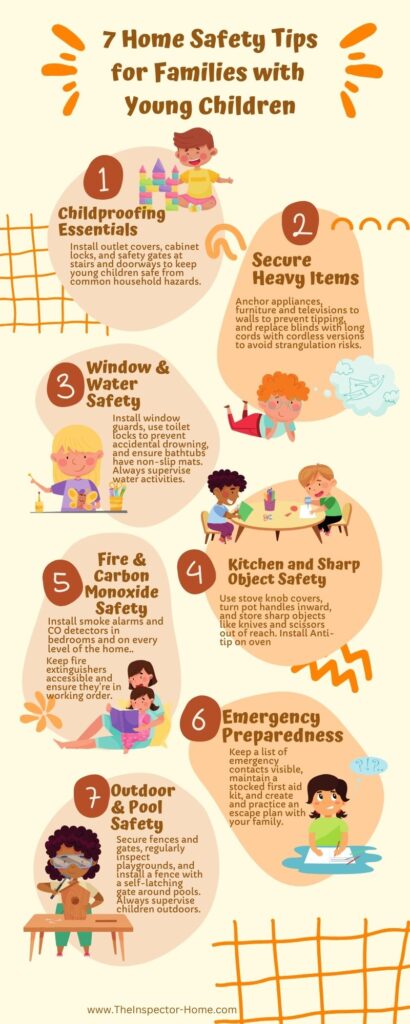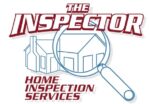As a real estate professional, your clients trust you to help them find not just a house, but a safe and loving home where their family can thrive. When it comes to families with young children, safety is paramount. That’s why this month’s newsletter is dedicated to a comprehensive home safety checklist designed specifically for families with little ones. Sharing this valuable information can strengthen your client relationships and position you as a trusted, caring advisor.
1. Childproofing Basics: Start with the Essentials
Before unpacking boxes, ensure the basics are in place:
- Outlet Covers: Install outlet covers on all accessible electrical outlets to prevent little fingers from exploring.
- Cabinet Locks: Secure cabinets and drawers, especially those containing cleaning supplies, sharp objects, or medications.
- Safety Gates: Place safety gates at the top and bottom of stairs, and in doorways to areas that might pose a hazard.
2. Furniture and TV Anchoring: Prevent Tipping Hazards
Children are naturally curious and love to climb. Make sure:
- Furniture Anchors: Use brackets or straps to anchor heavy furniture like bookshelves, dressers, and entertainment centers to the wall.
- TV Safety: Secure televisions to the wall or furniture to prevent tipping.
3. Window Safety: Prevent Falls and Accidents
Windows are a common hazard for young children:
- Window Guards: Install window guards or stops to prevent windows from opening more than a few inches.
- Cordless Blinds: Replace blinds with long cords with cordless versions to eliminate the risk of strangulation.
4. Fire and Carbon Monoxide Safety: Be Prepared
Fire and carbon monoxide are serious threats that require proactive measures:
- Smoke Alarms: Install smoke alarms in every bedroom, outside sleeping areas, and on every level of the home. Test them monthly.
- Carbon Monoxide Detectors: Place carbon monoxide detectors near sleeping areas and on each level of the home.
- Fire Extinguishers: Keep a fire extinguisher in the kitchen, garage, and on each level of the home.
5. Bathroom Safety: Keep Water and Hazards in Check
Bathrooms can be dangerous for young children due to water and hazardous items:
- Toilet Locks: Install toilet locks to prevent accidental drowning.
- Bathtub Safety: Use non-slip mats in the bathtub and on the floor, and always supervise bath time.
- Medicines and Cleaners: Store all medications and cleaning supplies in high, locked cabinets.
6. Kitchen Safety: A High-Risk Area
The kitchen is often the heart of the home, but it can also be one of the most hazardous areas:
- Stove Safety: Use stove knob covers and always turn pot handles inward to prevent little hands from reaching up.
- Sharp Objects: Keep knives, scissors, and other sharp objects in a locked drawer or out of reach.
- Appliance Safety: Unplug small appliances when not in use and keep cords out of reach.
7. Outdoor Safety: Extend the Care to Your Yard
The yard and outdoor areas need just as much attention:
- Fence and Gate Safety: Ensure fences and gates are secure, and consider adding locks to prevent unsupervised access.
- Playground Safety: If you have a swingset or play area, regularly inspect for wear and tear, and make sure the ground cover is soft enough to cushion falls.
- Pool Safety: Install a fence around the pool with a self-latching gate, and always supervise children when near water.
8. Emergency Preparedness: Have a Plan
Every family should be prepared for the unexpected:
- Emergency Contacts: Keep a list of emergency contacts, including doctors and poison control, in a visible place.
- First Aid Kit: Have a well-stocked first aid kit in the home, and make sure everyone knows where it is.
- Escape Plan: Create and practice an emergency escape plan with your family.
Share with Your Clients Today!
By sharing this safety checklist, you’re not only providing invaluable information but also showing your clients that you genuinely care about their well-being. Whether they’re new homeowners or simply looking to make their home safer for their little ones, this guide will help them feel confident in their family’s safety.
For more tips or to discuss any real estate needs, don’t hesitate to reach out. Let’s keep our families safe and our homes happy!

Download as PDF or JPG to share with your clients
